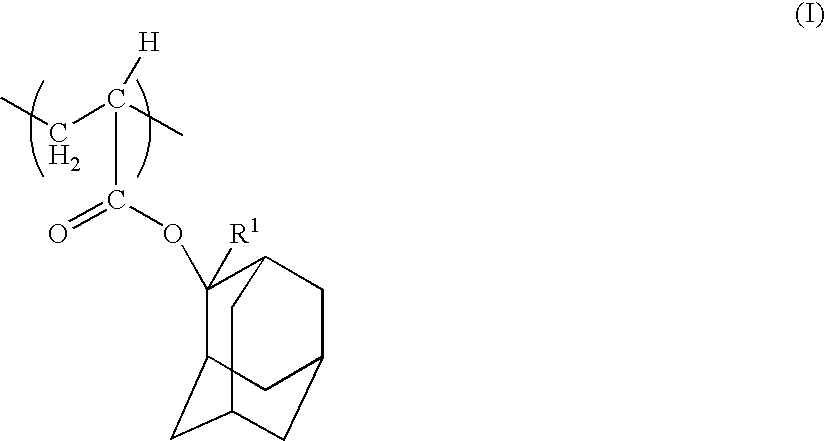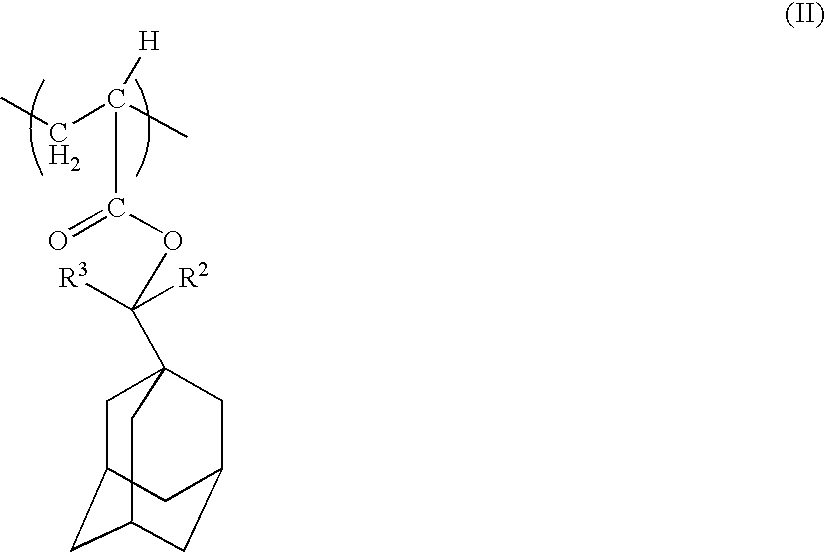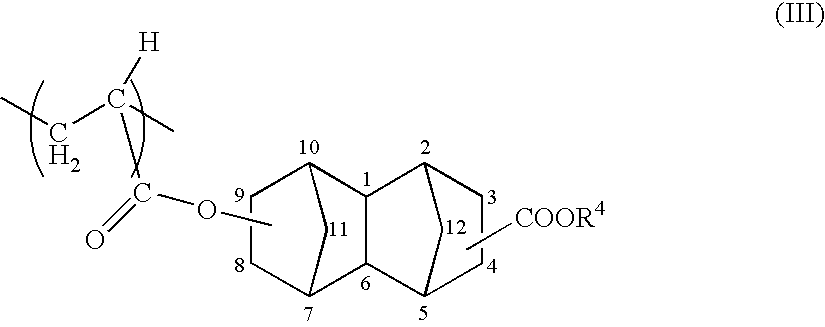Positive resist composition and method for resist pattern formation
a composition and composition technology, applied in the field of positive resist composition and a method for resist pattern formation, can solve the problems of deterioration in lithography characteristics, inability to conventional resist compositions that cannot achieve both a reduced level of defects and excellent lithography characteristics, so as to achieve excellent lithography characteristics and reduce the level of defects. , the effect of positive resist composition
- Summary
- Abstract
- Description
- Claims
- Application Information
AI Technical Summary
Benefits of technology
Problems solved by technology
Method used
Image
Examples
examples
[0257]As follows is a description of examples of the present invention, although the scope of the present invention is in no way limited by these examples.
examples 1 to 3
Comparative Examples 1 and 2
[0258]Using the formulations and blend quantities shown in Table 1, positive resist composition solutions were prepared by dissolving a component (A), a component (B) and a component (D) in an organic solvent.
TABLE 1Component (A)Component (B)Component (D)Organic solventExample 1Resin 1Resin 2PAG 1PAG 2Amine 1Solvent 1(30)(70)(2.5)(1.5)(0.2)(1150)Example 2Resin 1Resin 2PAG 1PAG 2Amine 1Solvent 1(40)(60)(2.5)(1.5)(0.2)(1150)Example 3Resin 1Resin 2PAG 1PAG 2Amine 1Solvent 1(50)(50)(2.5)(1.5)(0.2)(1150)ComparativeResin 1—PAG 1PAG 2Amine 1Solvent 1example 1(100) (2.5)(1.5)(0.2)(1150)Comparative—Resin 2PAG 1PAG 2Amine 1Solvent 1example 2(100) (2.5)(1.5)(0.2)(1150)
[0259]The abbreviations used in Table 1 have the meanings shown below. Furthermore, the numerical values shown within the parentheses ( ) represent blend quantities (parts by weight).
[0260]Resins 1 and 2: The structural formulas of the resins are shown below. In the formulas shown, the numerical values...
PUM
| Property | Measurement | Unit |
|---|---|---|
| Contact angle | aaaaa | aaaaa |
Abstract
Description
Claims
Application Information
 Login to View More
Login to View More - R&D
- Intellectual Property
- Life Sciences
- Materials
- Tech Scout
- Unparalleled Data Quality
- Higher Quality Content
- 60% Fewer Hallucinations
Browse by: Latest US Patents, China's latest patents, Technical Efficacy Thesaurus, Application Domain, Technology Topic, Popular Technical Reports.
© 2025 PatSnap. All rights reserved.Legal|Privacy policy|Modern Slavery Act Transparency Statement|Sitemap|About US| Contact US: help@patsnap.com



